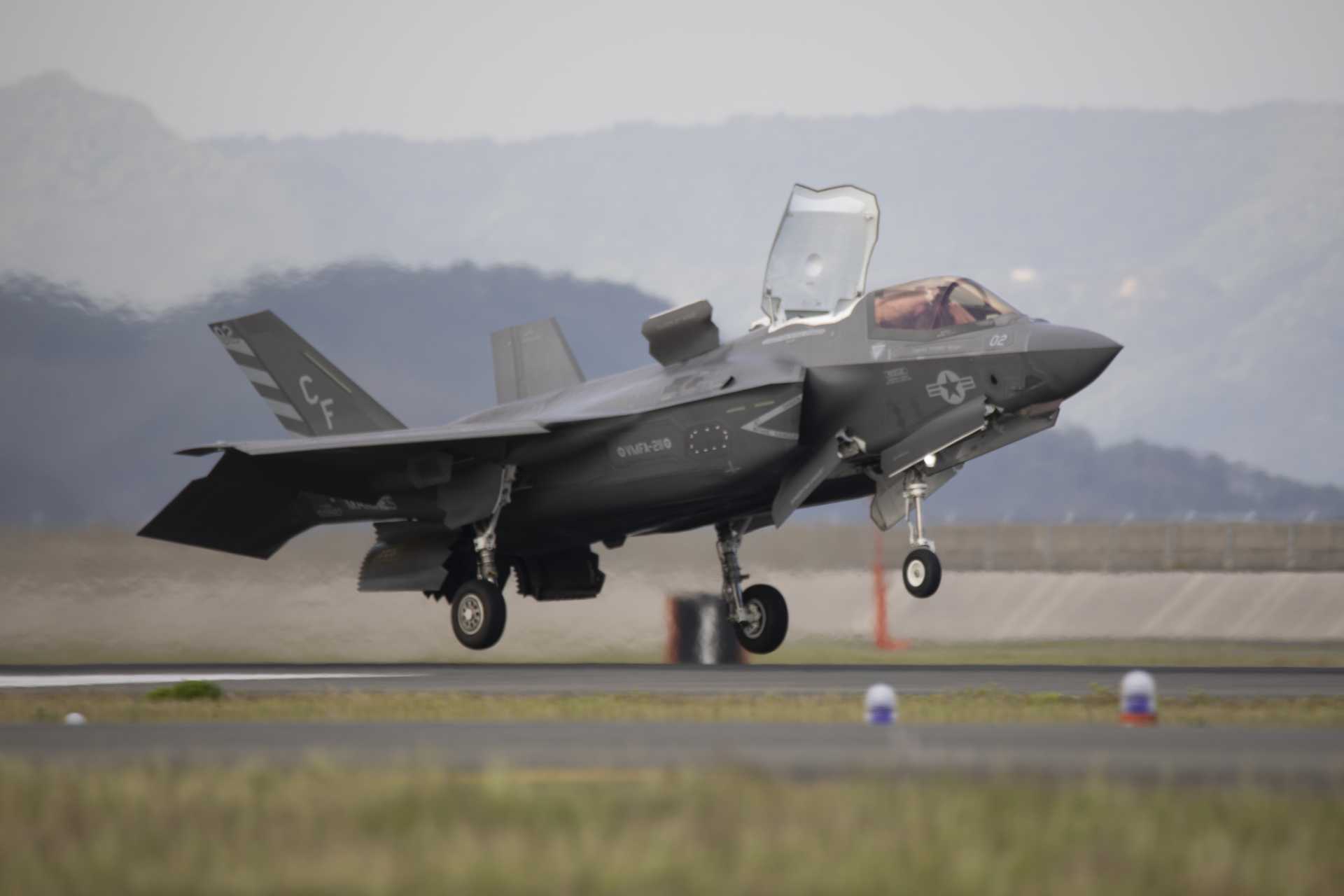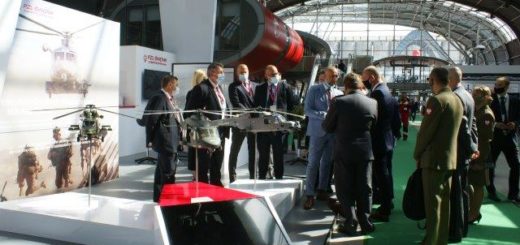Breaking News: U.S. Deploys F-35B Fighter Jet Squadron VMFA-211 to Japan Amid Rising Threats from China

{loadposition bannertop}
{loadposition sidebarpub}
The United States Marine Corps has deployed Marine Fighter Attack Squadron 211 (VMFA-211), known as the “Wake Island Avengers,” to Marine Corps Air Station (MCAS) Iwakuni, Japan, as part of ongoing efforts to strengthen deterrence and military readiness in the Indo-Pacific. Announced on May 10, 2025, the deployment, conducted under the Marine Corps’ Unit Deployment Program, comes amid rising tensions in the region, particularly due to China’s increasing military assertiveness around Taiwan and the South China Sea. Equipped with F-35B Lightning II stealth fighters, VMFA-211’s presence is intended to reinforce the U.S.-Japan security alliance and support flight operations across a strategically vital area.Follow Army Recognition on Google News at this link
A U.S. Marine Corps F-35B Lightning II from Marine Fighter Attack Squadron 211 (VMFA-211), under Marine Aircraft Group 12, 1st Marine Aircraft Wing, touches down at Marine Corps Air Station Iwakuni, Japan, on May 10, 2025. (Picture source: U.S. DoD)
The VMFA-211, a U.S. Marine F-35B Lightning II stealth fighter jet squadron based out of MCAS Yuma, Arizona, will join U.S. Marine Aircraft Group 12, 1st Marine Aircraft Wing, to support flight operations throughout the Indo-Pacific region. The Unit Deployment Program enables the rotation of U.S.-based units to key forward positions, providing essential training in diverse maritime and expeditionary settings. These overlapping deployments ensure that the Marine Corps maintains a continuous, capable presence, aligned with the responsibilities of the U.S.-Japan Treaty of Mutual Cooperation and Security.
A key factor in this deployment is the strategic importance of MCAS Iwakuni itself. Located in Yamaguchi Prefecture on the southern tip of Honshu island, MCAS Iwakuni is one of the most advanced and heavily fortified U.S. military airbases in the region. It serves as a central hub for Marine Corps aviation operations in the Western Pacific and houses both American and Japanese forces. The base’s infrastructure supports a wide range of aircraft, including the F-35B, and includes extensive logistics, maintenance, and command-and-control facilities tailored for high-tempo operations. Its proximity to key geopolitical flashpoints—such as Taiwan, the East China Sea, and the Korean Peninsula—makes it an ideal location for launching rapid-response missions and maintaining persistent surveillance and deterrence in the region.
Equipped with advanced stealth features, sensor fusion, and short takeoff/vertical landing (STOVL) capabilities, the F-35B significantly enhances operational flexibility and survivability. The presence of VMFA-211 strengthens the region’s aviation support capabilities, ensuring the rapid projection of combat power across contested environments. This deployment is seen as a vital measure to maintain operational superiority and regional stability in light of growing strategic competition.
The timing of the deployment highlights mounting tensions in the Indo-Pacific, largely driven by China’s aggressive military posturing. China’s increasingly frequent air and maritime operations near Taiwan, its expansive claims in the South China Sea, and its rapid naval buildup have sparked concern among U.S. allies and defense planners. Recently, the U.S. Air Force demonstrated its own readiness through a dramatic “elephant walk” at Kadena Air Base in Okinawa, assembling 53 combat aircraft, including F-35As and F-15Es, in a powerful show of force designed to signal deterrence to potential adversaries.
U.S. Indo-Pacific Command’s top officer, Admiral Samuel Paparo, recently underscored the urgency of forward-deployed forces, warning that China’s accelerating military development could challenge U.S. dominance in the region within a few short years. His warning echoes growing consensus among U.S. defense officials that credible deterrence demands sustained, visible deployments such as that of VMFA-211.
At the same time, the deployment further reinforces the U.S.-Japan security alliance, which remains central to the strategic balance in Asia. The treaty under which this alliance operates has been reaffirmed by both governments as the cornerstone of regional peace and stability. Japan, responding to the evolving threat environment, has taken substantial steps to strengthen its defense posture, including the formation of the Japan Joint Operations Command to improve coordination between its own Self-Defense Forces and U.S. units.
The forward presence of units like VMFA-211 complements Japan’s growing defense capabilities, particularly in defending remote islands and securing critical sea lanes. As Japan continues to invest in its own strike and reconnaissance capabilities, the joint U.S.-Japan military posture is evolving to present a more agile and formidable deterrent.
The arrival of VMFA-211’s F-35B stealth fighter jet squadron at MCAS Iwakuni is, therefore, far more than a routine deployment—it is a strategic maneuver reflecting the seriousness with which the United States views the evolving security landscape in the Indo-Pacific. It ensures that both the Marine Corps and allied forces are prepared for a range of potential contingencies, from gray-zone provocations to full-scale conflict, helping preserve peace and stability in one of the world’s most strategically significant regions.

{loadposition bannertop}
{loadposition sidebarpub}
The United States Marine Corps has deployed Marine Fighter Attack Squadron 211 (VMFA-211), known as the “Wake Island Avengers,” to Marine Corps Air Station (MCAS) Iwakuni, Japan, as part of ongoing efforts to strengthen deterrence and military readiness in the Indo-Pacific. Announced on May 10, 2025, the deployment, conducted under the Marine Corps’ Unit Deployment Program, comes amid rising tensions in the region, particularly due to China’s increasing military assertiveness around Taiwan and the South China Sea. Equipped with F-35B Lightning II stealth fighters, VMFA-211’s presence is intended to reinforce the U.S.-Japan security alliance and support flight operations across a strategically vital area.
Follow Army Recognition on Google News at this link
A U.S. Marine Corps F-35B Lightning II from Marine Fighter Attack Squadron 211 (VMFA-211), under Marine Aircraft Group 12, 1st Marine Aircraft Wing, touches down at Marine Corps Air Station Iwakuni, Japan, on May 10, 2025. (Picture source: U.S. DoD)
The VMFA-211, a U.S. Marine F-35B Lightning II stealth fighter jet squadron based out of MCAS Yuma, Arizona, will join U.S. Marine Aircraft Group 12, 1st Marine Aircraft Wing, to support flight operations throughout the Indo-Pacific region. The Unit Deployment Program enables the rotation of U.S.-based units to key forward positions, providing essential training in diverse maritime and expeditionary settings. These overlapping deployments ensure that the Marine Corps maintains a continuous, capable presence, aligned with the responsibilities of the U.S.-Japan Treaty of Mutual Cooperation and Security.
A key factor in this deployment is the strategic importance of MCAS Iwakuni itself. Located in Yamaguchi Prefecture on the southern tip of Honshu island, MCAS Iwakuni is one of the most advanced and heavily fortified U.S. military airbases in the region. It serves as a central hub for Marine Corps aviation operations in the Western Pacific and houses both American and Japanese forces. The base’s infrastructure supports a wide range of aircraft, including the F-35B, and includes extensive logistics, maintenance, and command-and-control facilities tailored for high-tempo operations. Its proximity to key geopolitical flashpoints—such as Taiwan, the East China Sea, and the Korean Peninsula—makes it an ideal location for launching rapid-response missions and maintaining persistent surveillance and deterrence in the region.
Equipped with advanced stealth features, sensor fusion, and short takeoff/vertical landing (STOVL) capabilities, the F-35B significantly enhances operational flexibility and survivability. The presence of VMFA-211 strengthens the region’s aviation support capabilities, ensuring the rapid projection of combat power across contested environments. This deployment is seen as a vital measure to maintain operational superiority and regional stability in light of growing strategic competition.
The timing of the deployment highlights mounting tensions in the Indo-Pacific, largely driven by China’s aggressive military posturing. China’s increasingly frequent air and maritime operations near Taiwan, its expansive claims in the South China Sea, and its rapid naval buildup have sparked concern among U.S. allies and defense planners. Recently, the U.S. Air Force demonstrated its own readiness through a dramatic “elephant walk” at Kadena Air Base in Okinawa, assembling 53 combat aircraft, including F-35As and F-15Es, in a powerful show of force designed to signal deterrence to potential adversaries.
U.S. Indo-Pacific Command’s top officer, Admiral Samuel Paparo, recently underscored the urgency of forward-deployed forces, warning that China’s accelerating military development could challenge U.S. dominance in the region within a few short years. His warning echoes growing consensus among U.S. defense officials that credible deterrence demands sustained, visible deployments such as that of VMFA-211.
At the same time, the deployment further reinforces the U.S.-Japan security alliance, which remains central to the strategic balance in Asia. The treaty under which this alliance operates has been reaffirmed by both governments as the cornerstone of regional peace and stability. Japan, responding to the evolving threat environment, has taken substantial steps to strengthen its defense posture, including the formation of the Japan Joint Operations Command to improve coordination between its own Self-Defense Forces and U.S. units.
The forward presence of units like VMFA-211 complements Japan’s growing defense capabilities, particularly in defending remote islands and securing critical sea lanes. As Japan continues to invest in its own strike and reconnaissance capabilities, the joint U.S.-Japan military posture is evolving to present a more agile and formidable deterrent.
The arrival of VMFA-211’s F-35B stealth fighter jet squadron at MCAS Iwakuni is, therefore, far more than a routine deployment—it is a strategic maneuver reflecting the seriousness with which the United States views the evolving security landscape in the Indo-Pacific. It ensures that both the Marine Corps and allied forces are prepared for a range of potential contingencies, from gray-zone provocations to full-scale conflict, helping preserve peace and stability in one of the world’s most strategically significant regions.





